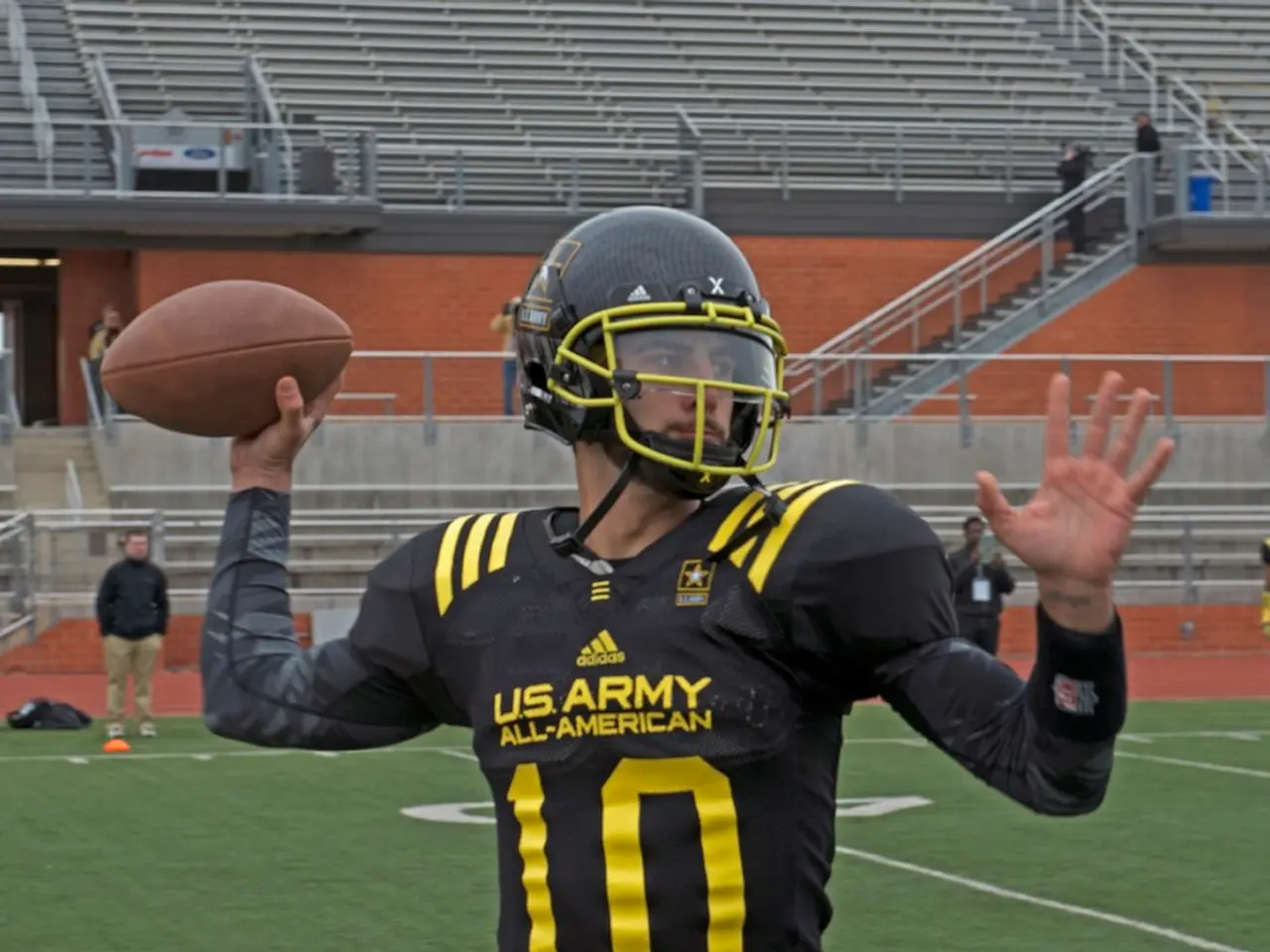Upcoming Rugby World Cup in 2025: Athletes to Don Bold Safety Gear Indicating Potential Brain Injuries due to Violence in the Game
In a significant move towards enhancing player safety, World Rugby has announced that all players participating in the Women's Rugby World Cup 2025, with the exception of those wearing braces, will be required to wear connected mouthguards.1
These smart mouthguards, which were first introduced by World Rugby in the 2023 Women's international XVs tournament, contain sensors such as accelerometers and gyroscopes that measure both linear and rotational head impacts.3 This technology is designed to detect potential concussion risks and prompt immediate medical evaluation after significant impacts.
The mouthguards will flash red when an impact exceeds a certain acceleration threshold, signalling referees to stop play for a head injury assessment.1 This system aims to not only protect players but also gather safety data to improve injury prevention.
World Rugby's chief medical officer, Dr Eanna Falvey, made this announcement during a press conference in London.2 After the Women's World Cup, the organisation plans to roll out the system more broadly across all top-tier rugby competitions globally.1
Currently, around 85% of male players in rugby wear connected mouthguards voluntarily, but they are not mandatory yet.1 With this move, World Rugby is setting a precedent for player safety, particularly in the women's game where full adoption is first occurring.
The aim is to enhance player safety by facilitating immediate head injury assessments and using data to improve protocols and identify foul play.1 This represents a significant advancement in concussion management and player safety technology in high-level rugby.
References:
- World Rugby
- BBC Sport
- World Rugby
Read also:
- Kid-Friendly Smoothie Delights: 7 Tempting Smoothie Recipes for Children
- In the event of Eric Adams' removal in November, progress on the safety of NYC subways may face obstacles
- Racing for the iconic yellow jersey in the Tour de France: preparing riders for the heat
- "Female advocate for women's rights in Morocco apprehended due to allegations of claiming Allah is a lesbian"






